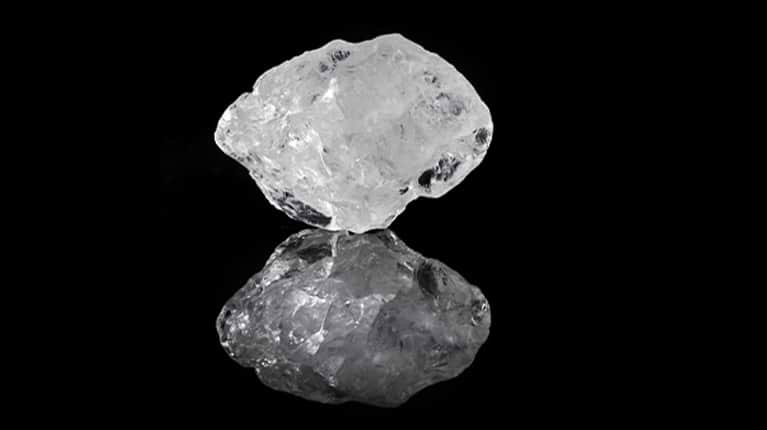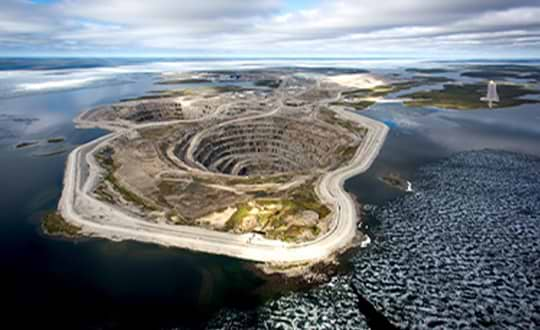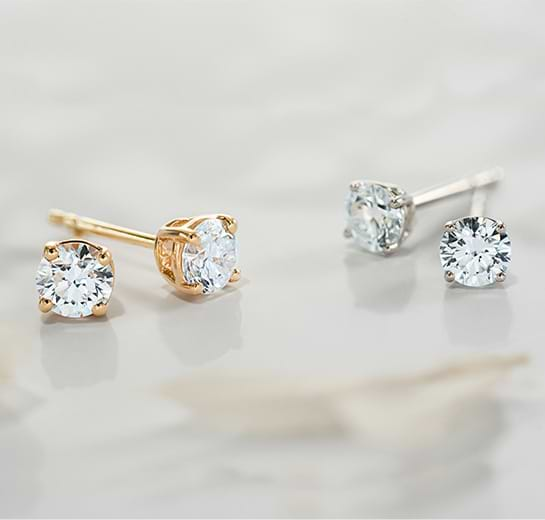

What are Lab Created Diamonds?
Lab grown diamonds are also known as man-made or lab created diamonds. They are produced in a laboratory setting without the negative environmental or human impact of mining. Lab created diamonds grow in the same way that mined diamonds do; they begin as carbon atoms under extreme heat and pressure, then bond together to form a crystalline lattice structure. They are cut and polished once fully formed to reveal maximum brilliance for stunning, ethically-sourced engagement rings, wedding rings, and jewelry for special occasions. And just like mined diamonds, they come in a variety of color and clarity grades.
There is a lot of debate surrounding the topic of lab grown diamonds vs. natural diamonds. Some people argue that natural diamonds, which are mined from the earth, are superior because they are rare, with a formation process that began billions of years ago. Others claim that lab grown diamonds, which are created in a laboratory, are just as good as — if not better than — natural diamonds because they are ethically sourced and conflict-free. The reality is that lab grown diamonds are now more in-demand than ever before, providing ethical luxury that lasts for eternity.
Time is also one of the most significant differences in lab grown vs natural diamonds. Scientists can produce lab grown diamonds in a laboratory in a lot less time than it takes for diamonds to be formed in nature. Modern science has made it possible for lab grown diamonds to develop in just two months, which is not only incredible, but also building our path to sustainability.
Time is one of the most significant differences in lab grown diamonds vs natural diamonds. Scientists can produce lab grown diamonds in a laboratory in a lot less time than it takes for diamonds to be formed in nature. Modern science has made it possible for lab grown diamonds to develop in just two months, which is not only incredible, but also building our path to sustainability.


There are two different methods of creating diamonds in a laboratory. High Pressure, High Temperature (HPHT) and Chemical Vapor Deposition (CVD). Both methods simulate the earth’s natural processes to create genuine gem quality diamonds in a laboratory.
You can learn more about the ethical creation and responsible manufacturing of diamonds right here in our guide.
What are Natural Diamonds?
A mined diamond, or a natural diamond, is a one that naturally forms over billions of years when carbon deposits deep below the earth’s surface are exposed to high temperatures. Pressure causes carbon atoms to bond together slowly, forming a crystal. These diamonds can only be mined when rare volcanoes erupt and bring them close to the surface. They are then extracted from the earth by a process that can be very harmful to the environment.





Benefits of Lab Created Diamonds vs Natural Diamonds
The truth is that there is no need to take diamonds from nature because they can be created in laboratories, making them a conflict free, modern luxury that exudes ethical beauty — all while being an ethically sourced alternative to mined diamonds.
What are the main benefits of buying a lab grown diamond vs natural diamonds?
Affordable
The first is that they are more affordable. Because they are created in a lab and responsibly manufactured, lab grown diamonds don't have the same cost associated with them as mined diamonds. Mined diamonds are becoming more and more scarce. Over the years, the cost of mining diamonds has increased significantly, while the number of diamonds being mined has decreased. Because of this rarity, they come with a higher price tag. Additionally, because they are not controlled by the same supply chains, lab grown diamonds could be up to 50% cheaper compared to a natural stone of a similar grade.
Quality
Still, many consumers may share the same question: Are lab grown diamonds as strong as real diamonds? When you compare the two, they are exactly the same. So, if you're looking for a high-quality diamond that is more affordable and has less of an environmental impact, then a lab grown diamond is the perfect choice for you.
No Impact from Mining
Another benefit is that they don't have the negative environmental impact that comes with mining. The process of mining can damage the environment and the ecosystem in the area where the mining is taking place. It can also have a negative impact on the people who live near the mine through water and air pollution. On the other hand, lab created diamonds are made in a lab where no mining is required, making lab grown diamonds an ethically minded and socially responsible alternative.
In addition to all these great features, with a lab grown diamond, you’ll have a conflict-free diamond stone. Conflict diamonds, often known as "blood diamonds," are gemstones mined in territories controlled by rebel forces opposed to internationally recognized governments. The rebels sell these diamonds and use the proceeds to buy weapons or support military operations.
Lab grown diamonds have the same physical and chemical properties as mined diamonds, which means they are just as hard and just as durable. The only difference appears in the trace elements found within the diamond. It takes specialized equipment to identify a lab grown diamond vs natural grown diamonds.
Comparing Lab grown vs Mined Diamonds
Lab grown diamonds have the same physical and chemical properties as mined diamonds, which means they are just as hard and just as durable. The only difference appears in the trace elements found within the diamond. It takes specialized equipment to identify a lab grown diamond vs natural grown diamonds.
| Compare the Differences | Mined Diamonds | Lab Created Diamonds |
|---|---|---|
| Is it considered a diamond? | ||
| Chemical Composition | ||
| Source | The Earth | A Laboratory |
| Time Taken to Create | 1 to 3 Billion Years | Several Weeks to Months |
| Independently Created | ||
| 100% Conflict-Free | Depends on Source | |
| Does it test as a real diamond vs simulated diamond? | ||
| Price Comparison (of comparable quality and size) | $$$$ | $$ |
Impact on Nature

Soil erosion, deforestation, and ecosystem damage are only a few of the many negative effects of diamond mining on the environment. Water resources are also impacted by the extraction. The ecosystem’s water supplies and water quality are both impacted by mining.
In the end, these facts mean that many effects of extracting diamonds are very bad for the environment. This brings us to another good question, what's the bottom line? If you're looking for a high-quality diamond that is both ethical and more affordable then a lab grown diamond is the perfect choice for you. Lab grown diamonds offer the same intrinsic beauty and durability as traditional, mined diamonds, only with fewer downsides.
The truth is that a lab grown diamond is indistinguishable from a mined diamond in nearly all ways, offering buyers an ethical, yet affordable mined diamond alternative that will make the perfect focal point of any engagement ring or other piece of fine jewelry.

The main difference is how each one is made. The mineral diamond is formed by a natural process dependent on extremely long natural factors. On the other hand, the laboratory diamond is a more efficient approach to producing diamonds with the same appearance and physical, chemical, optical, and atomic properties.
Furthermore, there are many difficulties in extracting mineral diamonds, while those made in laboratories are much more ethical and budget-friendly.
Yes, man-created diamonds are totally worth it! They can cost around 50% less than earth diamonds and are structurally identical, so you’re investing less for more – which is perfect.
The fact that they are more affordable than minerals and more ethical, because they do not require an extraction process and do not degrade nature, demonstrates that the industry and the presence of these beautiful and modern diamonds will only grow exponentially in the future.











